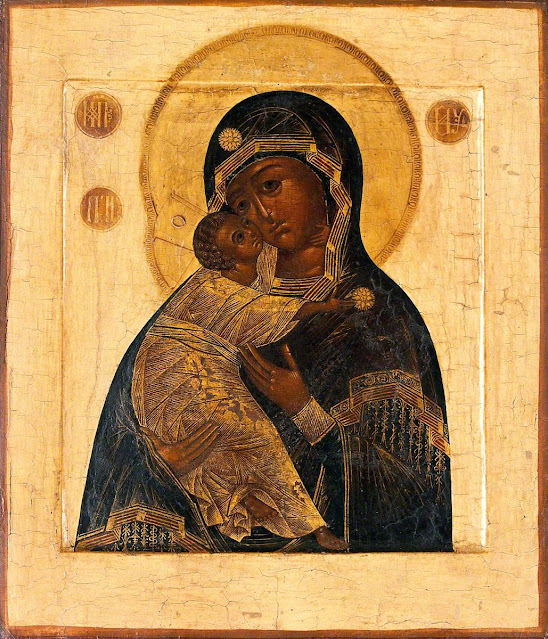The text translates as follows:
I am a dark-skinned but comely daughter of Jerusalem,
Therefore have I pleased the Lord and he has brought me into his chamber and said to me:
Arise my love and come.
For now the winter is past, the rain is over and gone,
The flowers have appeared in our land, the time of pruning is come.
These words have been typologically applied to the Blessed Virgin and it is potentially from this reference that the tradition of the Black Madonnas might have, at least in part, arisen.
Black Madonnas are effectively what they sound like: Madonnas (or Madonna and Child) where the figure(s) have darkened skin. While in some instances at least this might be attributable to accidental causes (namely the darkening of the pigments caused over time by elements such as the surface accumulation of dust and smoke), others seem to be purposeful choices, whether for reasons of localized inculturation or simply as an symbolic choice -- potentially coming with reference to the aforementioned scriptural reference that has also found its way into Marian themed liturgical texts.
Regardless of origins, Black Madonnas can be found throughout Europe, Latin America and many other locales and have been the subject to great devotion. Black Madonnas seem to most frequently come in the form of iconographic depictions, and sometimes also in Romanesque statuary. Here is just a small sampling taken from various regions of the world.
 |
| Lithuania |
 |
| Virgin of Candelaria, Canary Islands |
 |
| The Black Virgin of Outremeuse, Liege |
 |
| Tsuruoka, Japan |
 |
| Einsiedeln Abbey, Switzerland |
 |
| Virgin of Guadalupe, Mexico |
 |
| Russia |
 |
| Constantinople (Istanbul) |
| Santa Maria della Salute, Venice |













